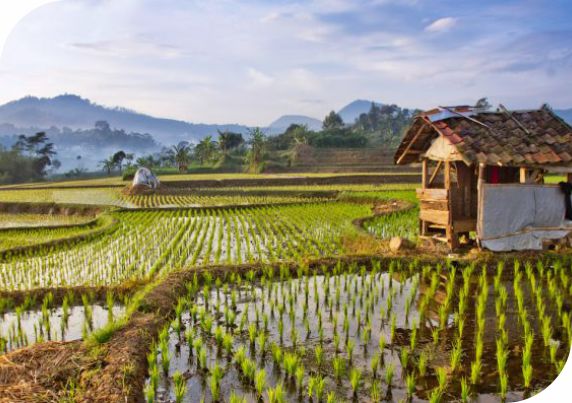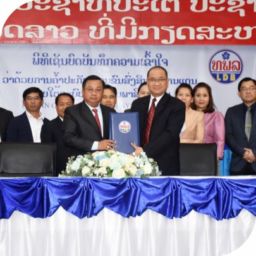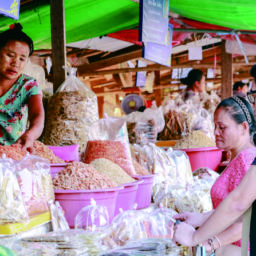

PROTECTING GEOGRAPHICAL INDICATIONS
TO IMPROVE FARMERS’ LIVELIHOODS IN ASEAN
Oeur Sam Ath was born and raised in one of the poorest provinces in Northern Cambodia. Like everyone in Preah Vihear province, his family owns a small plot of land used to cultivate rice.
Farmers in the province typically rely on the natural quality of the soil only for their agricultural activities without adding any pesticides or chemicals. ‘I didn’t know then that our farming practices would qualify our rice as organic’, Ath said.
Upon graduating from university, Ath returned to the province and started working with farmer cooperatives. In 2016, he became the executive director of the first agricultural union in the province, the Preah Vihear Mean Chey Union of Agricultural Cooperative.
‘Through the union, we are able to negotiate better prices for our farmers and can help them increase their income.’ Ath has been relentlessly looking for ways to improve the livelihoods of the farmers in his union.
‘As a son of a farmer, their issues are always close to my heart.’
Through his research, he came across the concept of geographical indications. ‘I thought it could be an avenue to further improve the lives of the farmers here, but I didn’t know enough about it.’
A geographical indication is a distinctive sign used to identify a product whose quality, reputation or other such characteristics relate to its geographical origin. Establishing and protecting geographical indications globally is one of the key objectives of EU development cooperation.
Within ASEAN, this mandate falls under the remit of the Enhanced ASEAN Regional Integration Support from the European Union Intellectual Property Rights (ARISE Plus IPR) programme.
Every year, the programme holds a so-called AsiaGI training in ASEAN countries with potential geographical indications. The training aims to provide relevant stakeholders with a basic but comprehensive understanding of geographical indications.
To ensure the training reaches all potential users and creators of geographical indications, every year the programme sponsors the attendance of officials and producers from all ten ASEAN Member States.
For the 5th AsiaGI training in 2020, the list of invitees included Ath and his union. ‘I was so excited to hear of the opportunity’, Ath said.
Due to the COVID 19 pandemic, the event was held virtually with pre-recorded videos, readings, quizzes and group work. ‘We also have weekly online discussions which I find really useful too.’
The training helped Ath better understand the concept and benefits of geographical indications, and provided him with practical knowledge on how to develop and register a geographical indication for products developed by his union members.
The session has also inspired him to pursue another business opportunity. ‘It’s been a few years since the rice we produce received organic certification’, Ath said. ‘If we can successfully apply geographic indications to our products, we can promote them more effectively!’








